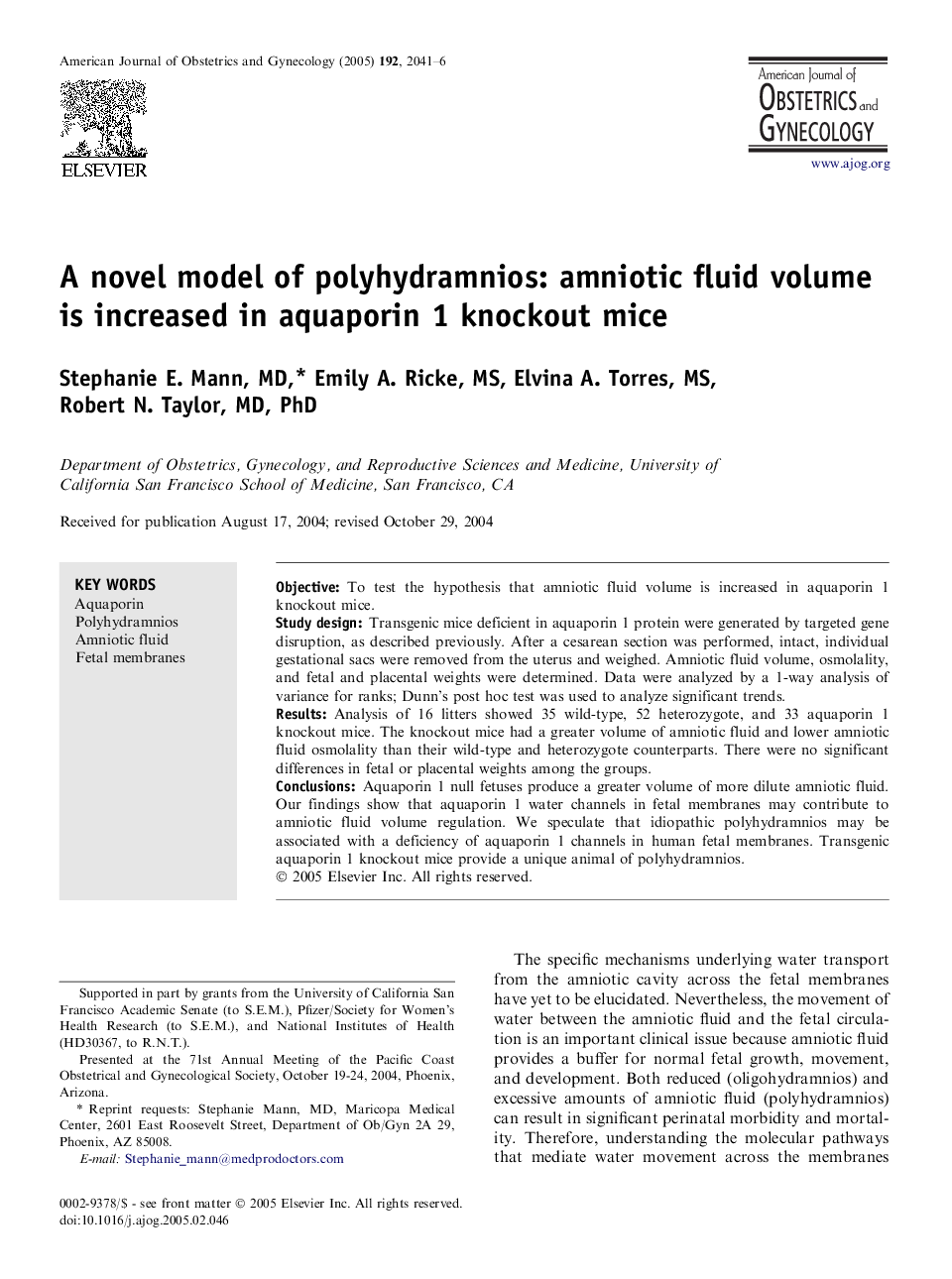| Article ID | Journal | Published Year | Pages | File Type |
|---|---|---|---|---|
| 3442947 | American Journal of Obstetrics and Gynecology | 2005 | 4 Pages |
ObjectiveTo test the hypothesis that amniotic fluid volume is increased in aquaporin 1 knockout mice.Study designTransgenic mice deficient in aquaporin 1 protein were generated by targeted gene disruption, as described previously. After a cesarean section was performed, intact, individual gestational sacs were removed from the uterus and weighed. Amniotic fluid volume, osmolality, and fetal and placental weights were determined. Data were analyzed by a 1-way analysis of variance for ranks; Dunn's post hoc test was used to analyze significant trends.ResultsAnalysis of 16 litters showed 35 wild-type, 52 heterozygote, and 33 aquaporin 1 knockout mice. The knockout mice had a greater volume of amniotic fluid and lower amniotic fluid osmolality than their wild-type and heterozygote counterparts. There were no significant differences in fetal or placental weights among the groups.ConclusionsAquaporin 1 null fetuses produce a greater volume of more dilute amniotic fluid. Our findings show that aquaporin 1 water channels in fetal membranes may contribute to amniotic fluid volume regulation. We speculate that idiopathic polyhydramnios may be associated with a deficiency of aquaporin 1 channels in human fetal membranes. Transgenic aquaporin 1 knockout mice provide a unique animal of polyhydramnios.
